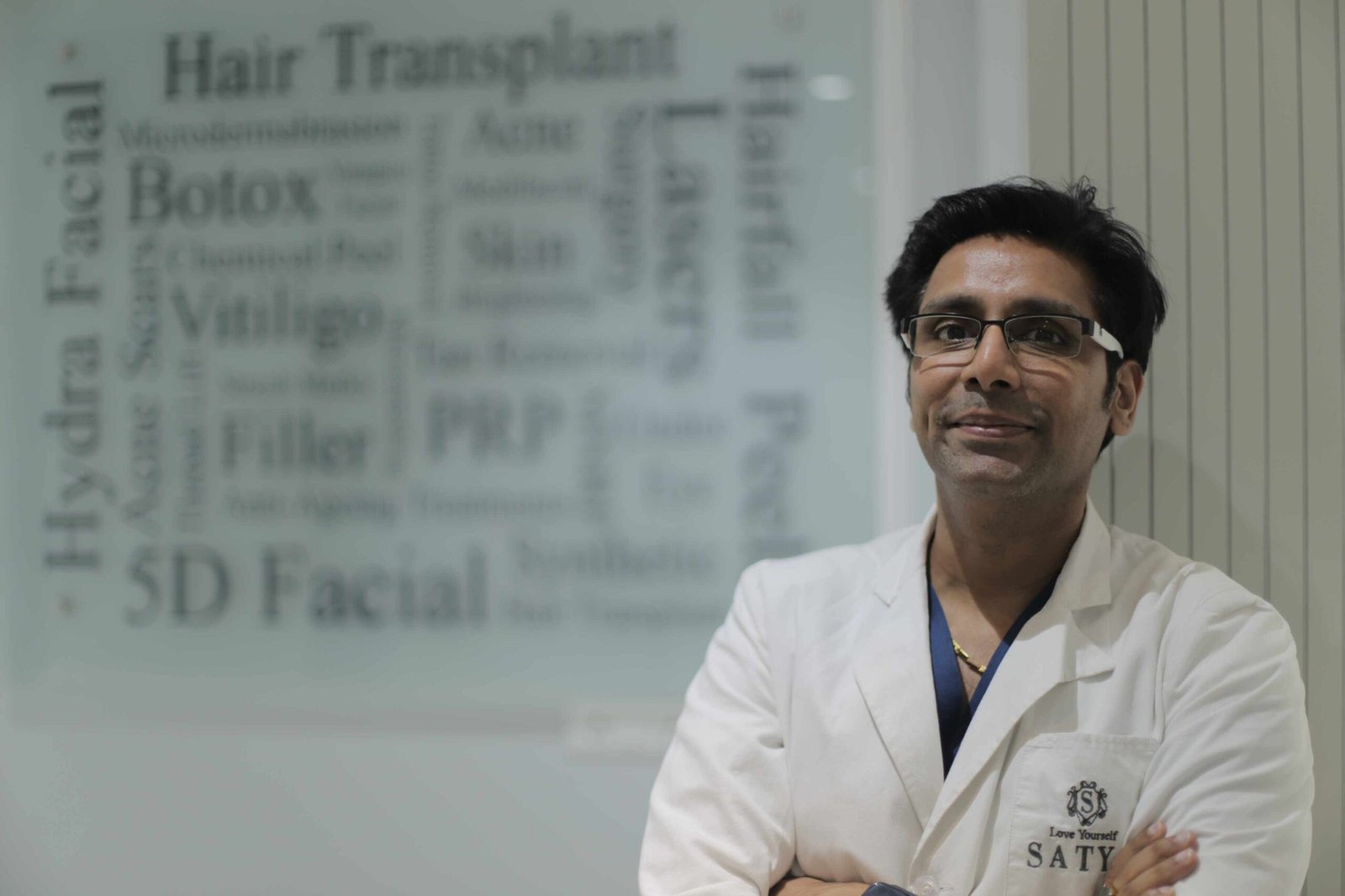Delhi : Hair transplant procedures have gained immense popularity in recent years as a reliable solution for hair loss. However, not all hair transplants yield the desired results. A failed hair transplant can be emotionally distressing and leave patients disappointed. To shed light on this issue and provide insights into preventing and rectifying failed hair transplants, we turned to Dr. Shaiil Gupta, a leading expert in the field and the founder of Satya Hair Transplant Clinic in Delhi.
Understanding Failed Hair Transplants:
A failed hair transplant can manifest in various ways, and the outcomes may not meet the patient’s expectations. Dr. Shaiil Gupta highlights some common examples:
- Unnatural Hairline: One of the most noticeable signs of a failed hair transplant is an unnatural and irregular hairline. When the transplanted hairline does not match the patient’s natural hairline, it can create an awkward and unattractive appearance.
- Sparse or Thin Hair Growth: In some cases, the transplanted hair may grow sparsely or remain thin, failing to provide the desired density and coverage.
- Scarring: Improper surgical techniques can lead to visible scars, especially in the donor area, making it evident that a hair transplant has been performed.
- Misplaced Grafts: If hair grafts are not placed correctly or at the wrong angle, it can result in a “pluggy” or uneven appearance.
- Complications and Infections: Post-surgery complications, such as infections, can occur and negatively impact the success of the transplant.
Precautions to Avoid a Failed Hair Transplant:
Dr. Shaiil Gupta emphasizes that preventing a failed hair transplant begins with selecting the right surgeon and clinic. Here are some precautions to consider:
- Research and Choose an Experienced Surgeon: It’s crucial to select a qualified and experienced surgeon who specializes in hair transplants. Look for a surgeon with a proven track record of successful procedures.
- Consultation and Expectations: Have a thorough consultation with the surgeon to discuss your expectations and ensure they align with realistic outcomes. Clear communication is key.
- Evaluate the Clinic’s Reputation: Research the clinic’s reputation, read reviews, and ask for referrals from previous patients. A reputable clinic is more likely to provide satisfactory results.
- Understand the Procedure: Educate yourself about the hair transplant procedure, including the techniques used and potential risks.
- Ask Questions: Don’t hesitate to ask your surgeon questions about the procedure, recovery, and any concerns you may have.
Actions to Correct a Failed Hair Transplant:
In cases where a hair transplant has not produced the desired results, Dr. Shaiil Gupta suggests several corrective actions:
- Consult with an Expert: Seek a consultation with a skilled hair transplant specialist who can assess the situation and provide recommendations for correction.
- Hairline Revision: If the hairline appears unnatural, a hairline revision can be performed to create a more aesthetically pleasing look.
- Graft Redistribution: Corrective surgery can involve redistributing hair grafts to improve density and coverage in areas with thin or sparse growth.
- Scarring Treatment: Various treatments, such as scar revision surgery or laser therapy, can be used to minimize the visibility of scars.
- Patience and Follow-Up: Correcting a failed transplant may take time. Be patient and diligent in following post-operative care instructions.
- Learn from Mistakes: Reflect on the reasons for the failed transplant and work closely with your new surgeon to avoid similar issues in the future.
Dr. Shaiil Gupta underlines the importance of choosing the right clinic and surgeon, as well as managing expectations realistically. Hair transplant procedures can be highly successful when performed by qualified professionals, but a failed transplant can be avoided with careful consideration and research.
Patients who have experienced a failed hair transplant should not lose hope. With the guidance of experienced experts like Dr. Shaiil Gupta and advancements in the field of hair restoration, corrective measures can help individuals regain their confidence and achieve the natural-looking results they desire.

